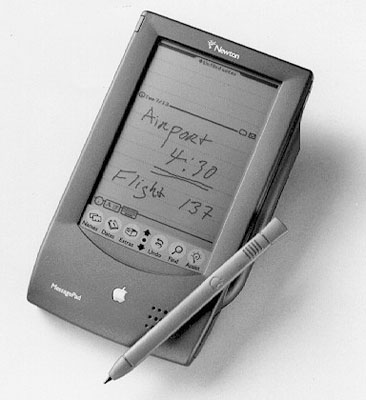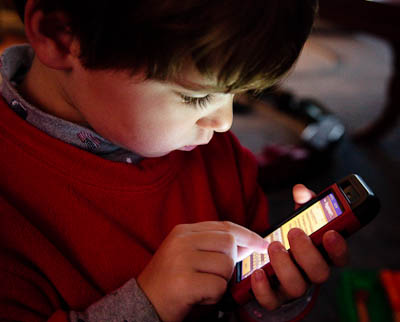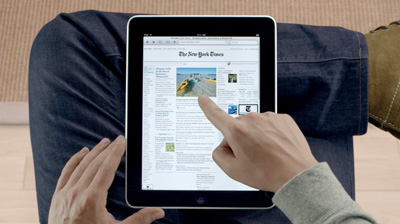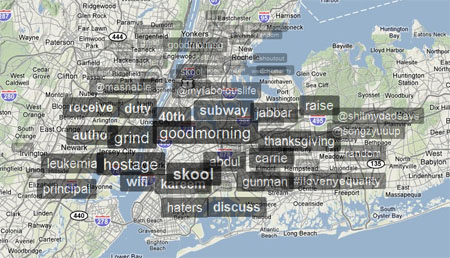Perspective: scenarioDNA's Tim Stock On Mobile Behavior, Culture, and Trends

In order to further our understanding of the behaviors developing around mobile technology, we have been reaching out to experts around the world for their unique insights. By doing this, we are able to escape ourselves and become exposed to new perspectives.
![]() Tim Stock runs a consumer insight shop called scenarioDNA that helps brands connect with culture. He also teaches courses in design research and trend analysis at Parsons the New School for Design.
Tim Stock runs a consumer insight shop called scenarioDNA that helps brands connect with culture. He also teaches courses in design research and trend analysis at Parsons the New School for Design.

What is your background and relationship with mobile?
My connection to mobile goes back to the early nineties when I worked for a start-up developing the Apple Newton as a tool for museums and retailers. That experience impacted how I saw technology going forward. On one hand, it was the model for how we stitch technology to real experiences. On the other hand, it showed how aware we need to be of the limitations of the tools. Who wanted to drag around that huge thing to get that experience?
That was a critical moment for the Newton. Developing programs that worked in real spaces and layering experiences to that. Using infrared as a location prompt to art objects and places within cities. It was the template for what we see today - but you couldn't get past the fact that Newton was heavy and huge and the screen would wash out if there was the slightest of glare. It was a brilliant concept looking at how to use technology to augment informational experiences. But we can't put the tools before the human. So the work with scenarioDNA is to balance that by finding the richest opportunities to make experiences better. Insight into culture and human behavior is critical.

You track cultural trends, could you give us a brief explanation of your process? How do you pinpoint the small things, the behavior that drives larger trends?
It all starts with people and the cultures that drive their behavior. We developed a methodology called Culture Mapping that is a visual explanation of how distinct cultural groups drive certain language and behavior. It allows us to follow how certain trends evolve and uncover patterns. It allows us to see where any brand may be missing certain opportunities to connect with. The idea is to get beyond generalized consumers and see creative narrative opportunities that are rich, nuanced and evolving. It doesn't matter what trends are happening now - it matters what the structure of that is to show us where it is going and how to join in. Small things today can lead to big movements tomorrow.

The future is not about advertising, it is about behavior. Mobile phones amplify our ability to experience the world around us, what are your thoughts on the opportunities this might bring to brands?
When I want a picture of the future challenge for brands I look at my eight year old. She has been downloading apps and time-shifting her TV viewing since she had the ability to hold the device in her hand. Her idea of how things should work are based on what she thinks should happen. If that doesn't work for her, she shuts it off. Brands need to get in sync with that reality. Less advertising and more surprise and delight. Shifting perspective to what she sees and wants. Mobile becomes synonymous with our consumption at some point when everything is on the grid and part of the conversation. That reality needs to sink in if we are to get the responsibility necessary to make that work.
What, if any, current cultural "macro trends" do you see affecting the way we use our mobile device? What are the variables driving growth in its use?
I think the biggest macro trend that drives the opportunities for mobile is a search for real experiences. We are tapped out of being plugged in - the old internet model of interaction. The laptop and the website are fading, and the fusing of digital and real is becoming more fluid. Augmented reality gives us a glimmer of that fluid and layered narrative world. Moving past the technology as the centerpoint of the discourse and rather having it simply make "real" work better. The challenge will be if we can move our thinking along. To build value and story for people rather than cluttering up the virtual landscape as it overlays on real stuff. We see cities removing video billboards - mobile done wrong can be a nightmare of clutter where we burn people out of anything coming from that channel. Real and authentic is the mandate of the new economy. We have to live up to that in every way.

In your presentation on Culture Networks, you mention that new networks erode distance (time and space is compressed). How do you think mobile communication will continue to change society?
I see mobile as the critical point of human fusing with device. That fusing makes the human part of the relationship more important and essential to how stuff works. Technology used right empowers human needs and desires. The idea of access and connectivity then become a catalyst for human invention and creativity. I've been working with a great educational non-profit called Sweat Equity Enterprises started by Marc Ecko that is transforming how young people learn to be designers. Technology is at the core of how education will be transformed in the future - but not in how we learn - but in how it empowers the potential of the individual in collaborating and connecting with others. There are naturally occurring culture networks that work to educate globally on how Jerking (the dance) is done or how to glitch in Halo - imagine that integrated into education from year one. We need to recognize how powerful this new digital network is and start building models that really take advantage of that in substantive ways. Empower creativity that spawns self-sustaining culturally-driven markets. it's about creative conspiring. You can explore, gain information and find serendipity with likeminds.
In Psychology of Space, you list out different kinds of spaces. Mobile technology is used differently in public and personal space, but do you think this "warping of space and time" is causing these lines to blur at all?
I think the clearest example of that is how we work today. The concept of work 20 years ago was defined by space and distance. It was a physical place we went to. Now it has become more conceptual. We create tiers of work based on the level of interaction needed. We develop methods for balancing those relationships with our personal lives. Mobile empowers our control over the relationship we have with work. It is up to us to figure out the balance. The idea of a defined work space with files and rolodexes used to feed the early model of mobile interaction design in devices like the Newton and the early Palm devices. Now the usability of work experiences is measured by how much they resemble home and non-work interactions. Status updates replace faxes and friend requests replace contact lists. This warping of home and work space offers a lot of great opportunities because it forces us to bring that human component to the problems we solve for others. If we solve them in the context that we live and not separated off in some isolated work tank - we are much more likely to make stuff better. Mobile certainly empowers that.

In a recent Independent article, Linguist David Crystal discusses Twitter, texting and our native tongue. Language is always changing, how does the way we talk hint at change in our mobile behavior?
I think the nature of communication is fundamentally changed by instant power of what mobile does to that. In so many ways it is a test of our own expression of usability. We can wing off a text and something happens - it feeds that response loop. And in that we learn, sometimes the hard way, the price of using language in ways that don't match to the response we would hope. Twitter and texting forces us to condense our syntax and comprehension into powerful nuggets of meaning. Our use of language becomes layered and shifts between circles of familiarity and with those we need to bridge comprehension. The average person now has a greater understanding of the contextual implications of language as well as the ways it can unify us around similar goals regardless of where we are and what our native tongue may be. The process and the impact become more important than the form. We design to shape effect - it is a fundamental human expression.
What value is there for brands to visualize behavior?
The real insights are in the structure of how things work. The motives behind what makes us connect with certain products or experiences. Seeing the patterns and plotting the behavioral data makes the process of shaking out insights much easier. The answer to many brand problems is often not focusing on one particular group and its data, but rather looking at the ways groups are distinguished and differentiated. This can take the form of brand affiliations, preferred product ingredients, and the way media tools are used to organize and propel behavior within groups. It helps us see how generations differ and unite around certain themes. It can also help us plot the nuances within a particular generation. The trick is knowing what data is worth bringing into the visual map. We can be awash in data that isn't really helping tell the story. Typically more product and category than human-centric data. This requires a structured approach to how the data is gathered. Starting with recruitment and effective filtering there - feeding from cultures rather than a generalized type- and moving through into the modalities of research that offer real language as opposed to surveyesque responses. We use these visual maps to plot the path of adoption from the strongest points out into the culture at large. It keeps brands in touch and able to evolve as the language around their products is evolving.

Any predictions or developments you are following? What do you think about, say, the iPad?
Looking at developments like iPad I think rest on how well they solve a broad base of problems for real people. The adoption rests on where the behavior is going. And the cultures that will drive that behavior. It is one of the challenges Kindle has as it addresses a design solution for a diminishing behavior - traditional one platform reading. Because it is so specialized it also forces the issue of taking something away from the pleasure of reading a physical paper book. Kindle reminds me a lot of the Palm V. Great - but for who - where does that lead? It needs to be more than a reader for it to have sustainability. How is it passed on from that original adopter on to other groups that will get it and add to the meaning. I see the Kindle market driven a lot by Xers who don't mind that. It works as a badge for many.
The opportunity for iPad lives much more as a transmedia device. Less about reading and more about the interrelation between media print, video and game media forms. The ultimate device is one that can effectively feed content around multiple formats and begin to stitch that together into a marketing platform for that content property. Much like Nike ID does for that brand and the culture of running. I also see it as an easy replacement for laptops used as presentation and sales tools. We know we have gotten to the critical tipping point when we are no longer talking about the delivery device and we are talking about the experience itself. We may have a little further to go there with iPad - but the potential is great.














